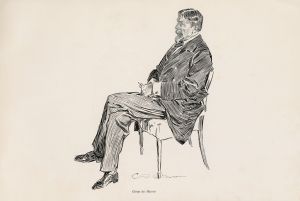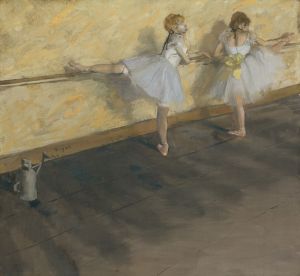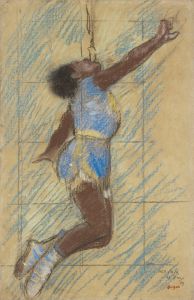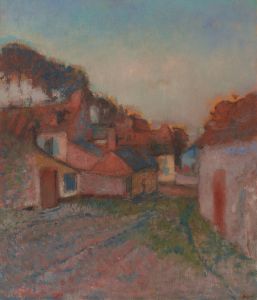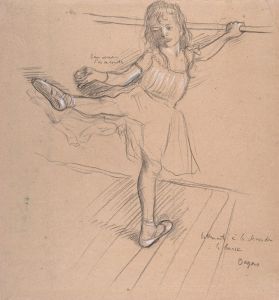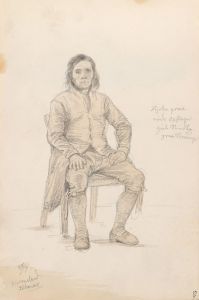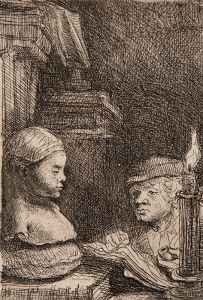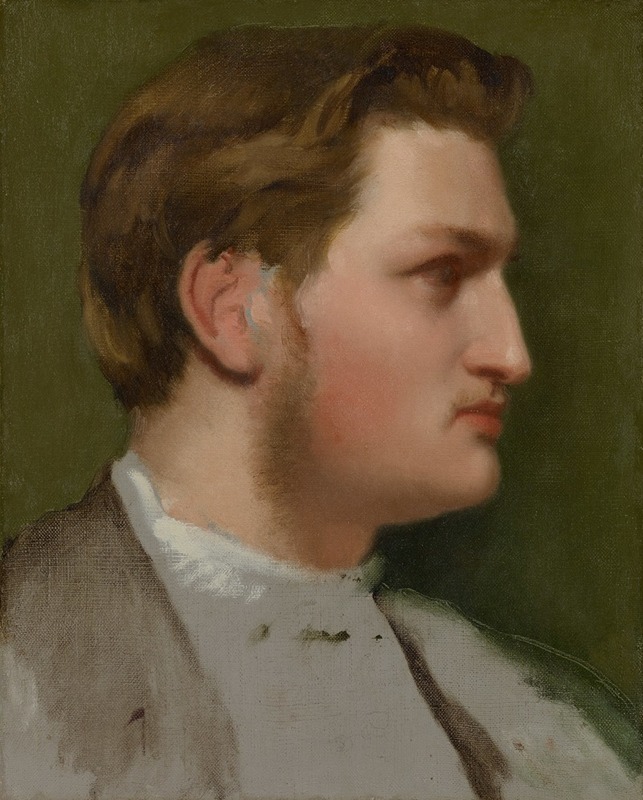
Portrait of Paul Valpinçon
A hand-painted replica of Edgar Degas’s masterpiece Portrait of Paul Valpinçon, meticulously crafted by professional artists to capture the true essence of the original. Each piece is created with museum-quality canvas and rare mineral pigments, carefully painted by experienced artists with delicate brushstrokes and rich, layered colors to perfectly recreate the texture of the original artwork. Unlike machine-printed reproductions, this hand-painted version brings the painting to life, infused with the artist’s emotions and skill in every stroke. Whether for personal collection or home decoration, it instantly elevates the artistic atmosphere of any space.
Edgar Degas's Portrait of Paul Valpinçon is a work by the renowned French Impressionist painter Edgar Degas. The painting depicts Paul Valpinçon, a close friend of Degas and a member of the Valpinçon family, who were significant figures in the artist's personal life. The Valpinçons were long-time supporters of Degas and provided him with opportunities to work and relax at their estate in Normandy. This friendship is reflected in several works by Degas, including portraits of family members and scenes from their home.
The exact date of the painting is not definitively documented, but it is believed to have been created during the 1860s or 1870s, a period when Degas was exploring portraiture and experimenting with techniques that would later define his Impressionist style. The portrait is notable for its intimate and personal nature, capturing Paul Valpinçon in a contemplative pose. Degas's use of light, shadow, and meticulous attention to detail in the rendering of textures and facial expressions demonstrates his skill as a portraitist.
The medium of the painting is oil on canvas, a common choice for Degas during this period. The composition is relatively restrained, focusing on the sitter without elaborate background elements, which emphasizes the subject's personality and presence. This simplicity aligns with Degas's interest in realism and his desire to capture the essence of his subjects without unnecessary embellishment.
The painting is part of a broader body of work that highlights Degas's connections to his friends and patrons. The Valpinçon family, in particular, played a recurring role in his artistic output. Degas also painted Paul Valpinçon's wife and daughter, further illustrating the closeness of their relationship.
As of now, the current location of Portrait of Paul Valpinçon is not widely documented in public records, and it is unclear whether it resides in a private collection or a museum. The painting is less well-known compared to Degas's more famous works, such as his ballerina series or his depictions of modern Parisian life, but it remains an important example of his portraiture and his ability to convey the individuality of his subjects.
This work reflects Degas's broader artistic interests during the mid-19th century, including his focus on capturing human emotion and his dedication to portraying his subjects with honesty and precision.








